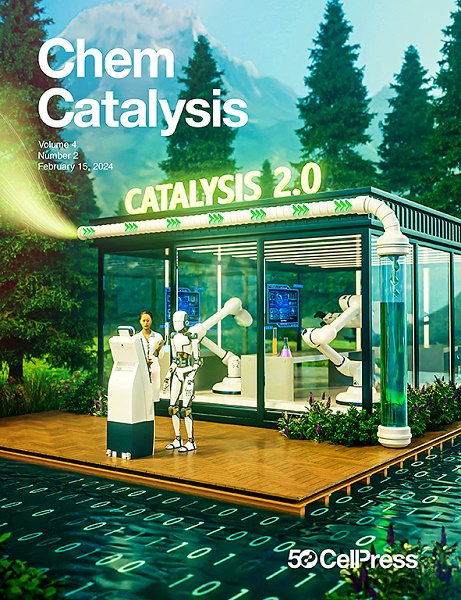可溶性聚合物微环境促进光催化过氧化氢生成和自芬顿反应
IF 11.5
Q1 CHEMISTRY, PHYSICAL
引用次数: 0
摘要
光催化过氧化氢(H2O2)生产是一项很有前途的绿色技术,但它通常依赖于昂贵的牺牲剂来提高电荷分离和催化效率。废聚合物提供了一种具有成本效益的替代方案,有效地解决了废物管理和资源利用的挑战。本研究采用废旧聚乙烯醇(PVA)作为牺牲剂光催化生产H2O2,避免了聚酯和聚烯烃苛刻而复杂的水解过程。重要的是,PVA独特的结构创造了一个具有丰富羟基的局部微环境,与传统的牺牲剂相比,显著提高了H2O2的产率。此外,铁离子的引入引发了光自芬顿(PSF)反应。PVA链上的羟基促进了与铁的强相互作用,从而增强了Fe3+/Fe2+氧化还原循环,使PVA和其他污染物同时被去除。这种方法为聚合物废弃物的直接利用提供了一种新的、可持续的途径。本文章由计算机程序翻译,如有差异,请以英文原文为准。

Soluble polymer microenvironments promote photocatalytic hydrogen peroxide production and self-Fenton reactions
Photocatalytic hydrogen peroxide (H2O2) production is a promising green technology, but it typically relies on costly sacrificial agents to enhance charge separation and catalytic efficiency. Waste polymers offer a cost-effective alternative, effectively addressing waste management and resource utilization challenges. Herein, we employ waste polymer polyvinyl alcohol (PVA) as a sacrificial agent for photocatalytic H2O2 production, avoiding the harsh and complex hydrolysis process of polyesters and polyolefins. Importantly, the unique structure of PVA creates a localized microenvironment with abundant hydroxyl groups, significantly increasing the H2O2 yield compared with those of conventional sacrificial agents. Additionally, the introduction of iron ions triggers a photo-self-Fenton (PSF) reaction. The hydroxyl groups on the PVA chain facilitate strong interactions with iron species, thereby enhancing the Fe3+/Fe2+ redox cycle and enabling the simultaneous removal of both PVA and other pollutants. This approach offers a novel and sustainable pathway for the direct utilization of polymer waste.
求助全文
通过发布文献求助,成功后即可免费获取论文全文。
去求助
来源期刊
CiteScore
10.50
自引率
6.40%
发文量
0
期刊介绍:
Chem Catalysis is a monthly journal that publishes innovative research on fundamental and applied catalysis, providing a platform for researchers across chemistry, chemical engineering, and related fields. It serves as a premier resource for scientists and engineers in academia and industry, covering heterogeneous, homogeneous, and biocatalysis. Emphasizing transformative methods and technologies, the journal aims to advance understanding, introduce novel catalysts, and connect fundamental insights to real-world applications for societal benefit.

 求助内容:
求助内容: 应助结果提醒方式:
应助结果提醒方式:


